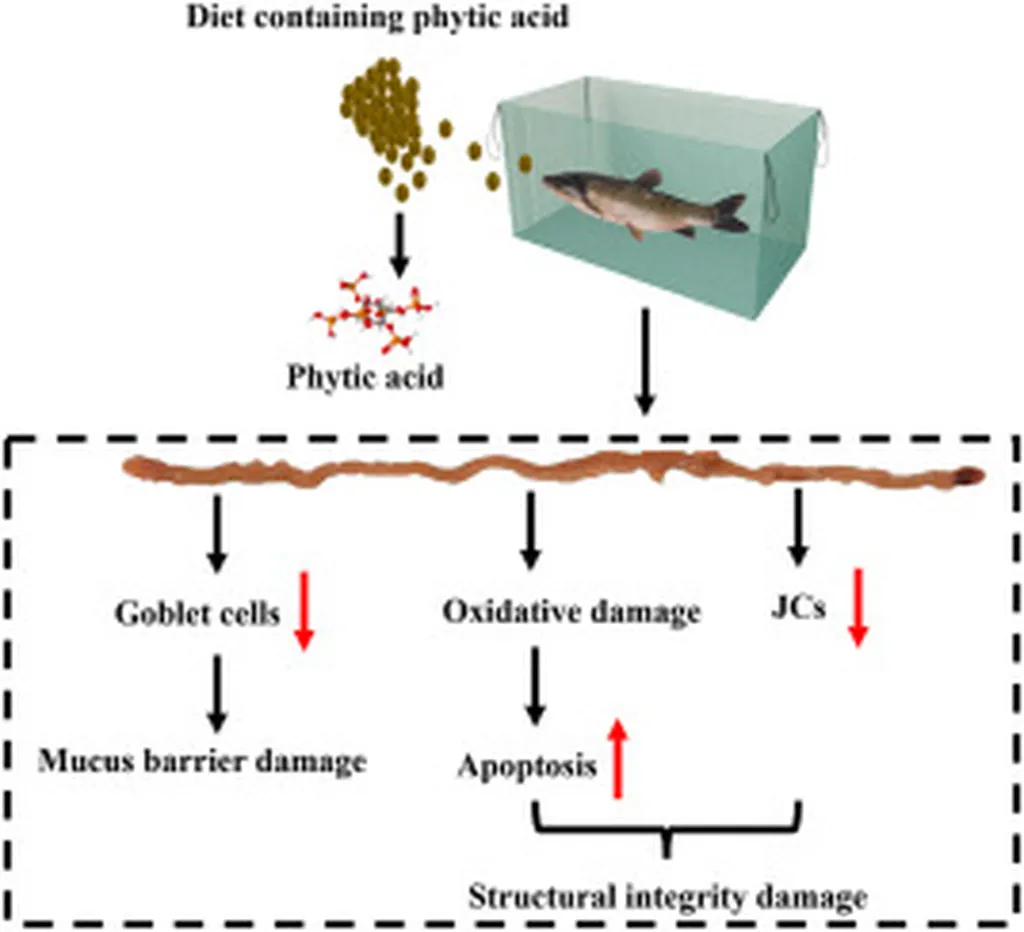In the heart of China, researchers have made a significant stride in aquaculture, potentially reshaping the industry’s future. Yuhua Yue, a scientist at the Hunan Engineering Technology Research Center of Featured Aquatic Resources Utilization, and her team have discovered that a compound called sanguinarine can boost the growth and health of grass carp, a vital species in aquaculture. Their findings, published in the journal ‘Aquaculture Reports’ (translated as ‘Aquaculture News’), could have substantial commercial implications, particularly in reducing reliance on imported soybeans and enhancing industry resilience.
The study focused on finding functional substitutes for soybean meal, a common ingredient in fish feed. Soybean meal is often imported, making it a costly and logistically challenging component for aquaculture. Yue’s team explored the use of cottonseed meal as a substitute, supplemented with sanguinarine, a compound known for its health benefits.
The results were promising. Grass carp fed diets supplemented with sanguinarine showed significantly improved growth rates and feed conversion ratios. “The fish not only grew faster but also utilized their feed more efficiently,” Yue explained. This is a crucial finding for the aquaculture industry, where feed costs can account for up to 70% of operational expenses.
But the benefits didn’t stop at growth performance. The study also revealed that sanguinarine supplementation improved liver and intestinal health in grass carp. The compound helped reduce liver damage, lipid accumulation, and fibrosis, while restoring intestinal architecture. “We saw a marked improvement in the overall health of the fish,” Yue noted. This is particularly important as healthy fish are more resilient to diseases and environmental stresses, leading to more sustainable and profitable aquaculture operations.
The research also shed light on the role of sanguinarine in bile acid metabolism. Bile acids are crucial for digestion and absorption of nutrients, and their metabolism is closely linked to overall health. The study found that sanguinarine enhanced bile acid metabolism, further contributing to the improved health and growth of the fish.
The implications of this research are far-reaching. By reducing reliance on imported soybean meal, aquaculture operations can become more self-sufficient and resilient. Moreover, the improved growth performance and health of the fish can lead to increased yields and profitability. As Yue put it, “This is not just about finding a feed substitute. It’s about enhancing the sustainability and profitability of aquaculture.”
The study also opens up new avenues for research. Future studies could explore the use of sanguinarine in other fish species and investigate the optimal dosage and delivery methods. Moreover, the findings could inspire research into other functional feed additives that can enhance fish health and performance.
In conclusion, Yue’s research offers a promising solution to some of the key challenges facing the aquaculture industry. By leveraging the power of sanguinarine, aquaculture operations can enhance their resilience, sustainability, and profitability. As the industry continues to grow, such innovations will be crucial in meeting the increasing demand for seafood.

